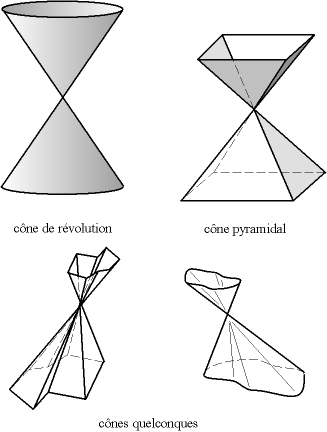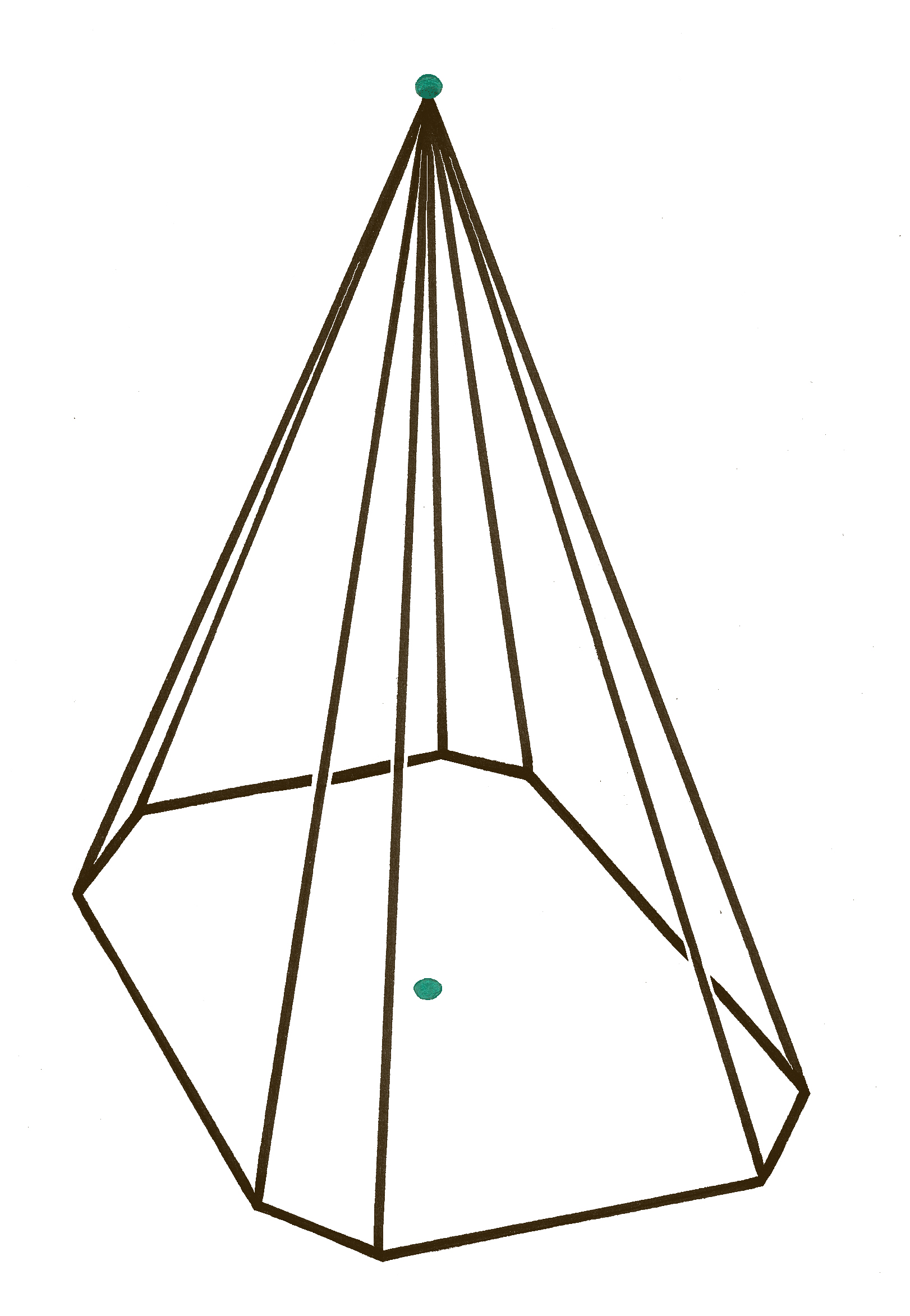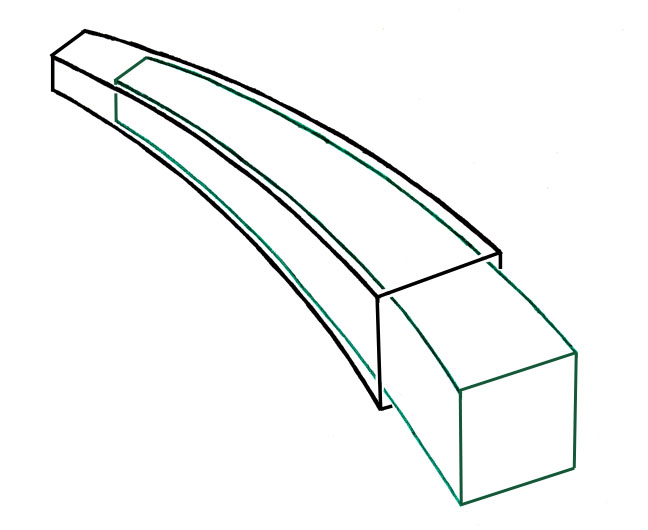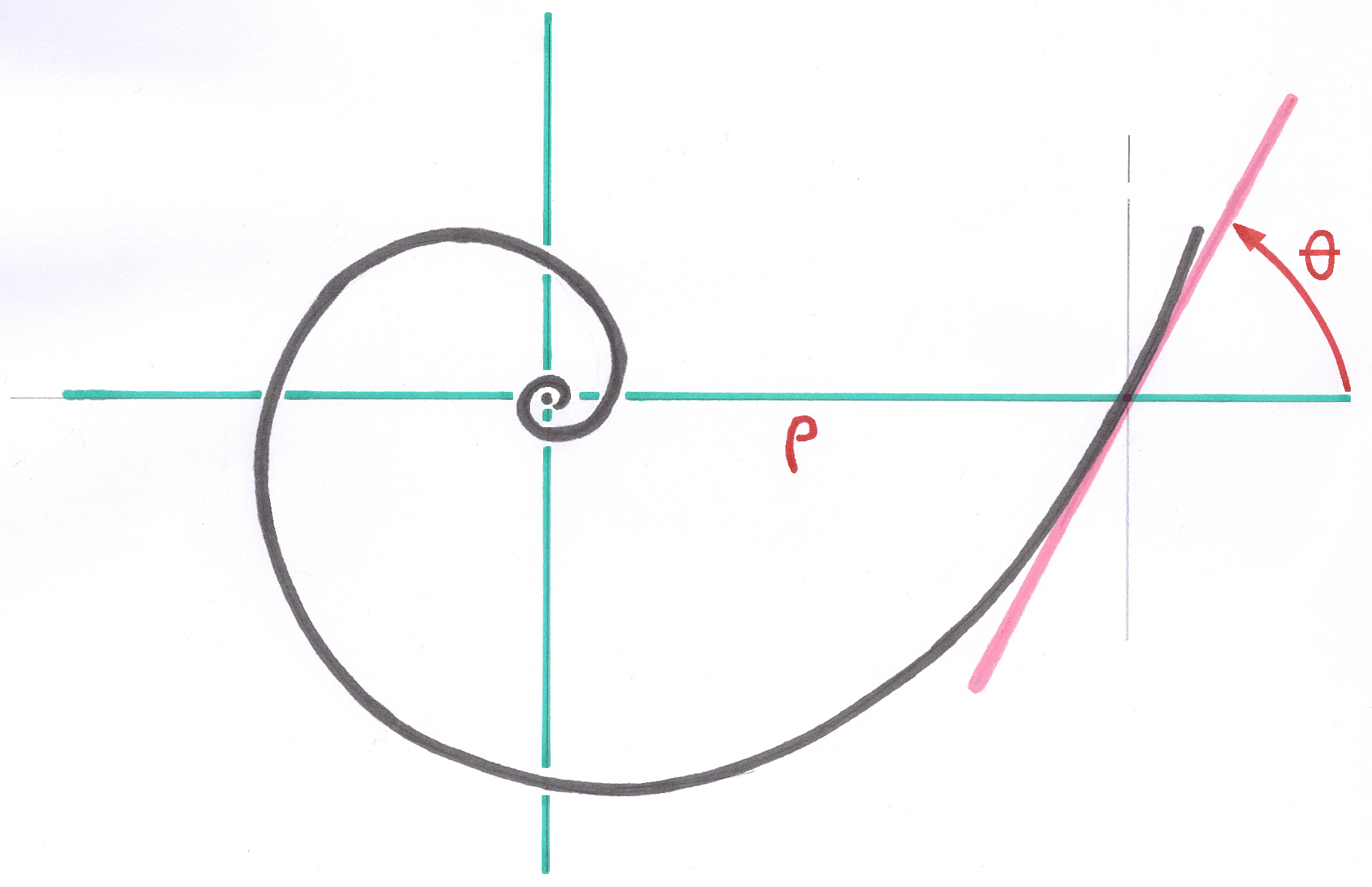2.3. The Principle of the Conical Junction in the Bone
2.3.1. Summary
Geometrical Anchoring requires a Conical Junction.
The femoral stems with Geometrical Anchoring are immobilized in the bone in the same way that the mechanical assemblies with impacted conical junction known as Morse taper, like are for example all the modular prosthetic heads.
The anchoring zone of the stem and the prepared osseous bed must satisfy the geometrical definitions of the cones.
The osseous bed must be prepared by rasping or boring to present vis-a-vis the implant a sufficient proportion of rectified surface.
The surface of the implant must present a roughness or microstructure ensuring the blocking of the Conical Junction.
An Impaction Reserve must be provided during the preparation of the bone to allow the setting the bone into prestress at the time of final impaction.
2.3.2. How the cones are defined:
A cone is a regulated surface described by a line called generator, passing by a fixed point called summit and a variable point traversing a closed plane curve, called directrix. One also speaks in this case about conical surface.
Revolution cone Among conical surfaces, most usual is the circular cone in which the directrix curve is a circle perpendicular and centered on the axis passing by the summit. This cone is called of revolution because it can be generated simply by the rotation of a line passing by the summit and inclined of a fixed angle compared to the axis.
It is starting from this circular cone that the mathematicians (whose Apollonius de Perga) classified a set of curves like the conical ones (intersections of the cone by a plan): circles, ellipses, parabolas, hyperboles.(wikipedia)

2.3.3. Generalization of the concept of conical junction
The impacted conical junctions are traditionally obtained by surfaces in presence in the shape of truncated cone of revolution. The conical junctions can also be obtained with pyramidal surfaces, therefore conical surfaces having rectangular or square sections and even with more complex directrix.
It is while seeking to transform the prosthesis of Zweymüller of first generation which was rather in the shape of “corner”, by observing the mathematical rules of the pyramidal form to him which I began the improvement of this stem and ended to the AlloClassic prosthesis in 1984, and SL Plus in 1992.



2.3.4. The assembly bone-prosthesis by conical junction
The conical surfaces applied on the one hand to the bone, on the other hand to the implant, must always satisfy the mathematical definition of the cone. In certain cases specific adaptations can be interesting. The angles of blocking, surface qualities and the properties of friction of often very different materials associated, must be suitably defined.
As for any conical junction, involved surfaces should never be smooth, and must necessarily comprise random roughnesses, or fine geometrically definite microstructures. These surfaces encrust one in the other, the microstructure of the hardest material attacking the surface of the most tender material. This incrustation removes the risk of axial sliding which would be likely to release the elastic tension (Prestressing) initially established by impaction.
In the case of the geometrical anchoring of a stem in the bone, it is the titanium sanded by corundum crystals which attack the most tender material, the cortical bone.
Stability by blocking of the stems with conical junction is obtained by two successive logical actions:
1. On the one hand the insertion of the implant in its osseous bed (theoretical surfaces male and female being only put in contact) in the strictly nominal place from the geometrical and dimensional point of view. That means that for two conical surfaces, all the points intended to come in contact meet without there being still, in this phase, of forces or pressures which occurred.
It is only in the following phase that all these points will be simultaneously subjected to forces locally perpendicular to surfaces. These forces will be, in theory, equal in all points but will be able to differ in a moderate way and controlled by the application calculated of small differences in the form of surfaces (these effects are obtained by the Functions of Fixing and Separation in calculation of stems SL-Plus and SLR-Plus).
I think that this constancy of the forces remains always a first approximation, because even in the traditional Morse taper these forces are not rigorously constant because of difference of the diameters on two different levels and thus of the difference of the compression ratios.
2. On the other hand an additional impaction . After the exact geometry of the two parts was reached, this additional impaction gets a setting in reciprocal tension of the two involved parts, the male part being compressed and the female part being dilated. This setting in tension brings the final stability of the junction.
Small variations in linearity or general curvature between the stem and osseus bed, about the millimetre, are also absorbed by tiny deformations of the two components, permitted by elasticities of the titanium of the stem and the cortical bone of the diaphyse. These elastic strain of low amplitude take part in conical blocking and contribute to the primary stability of the prosthesis. They take part in the setting into prestress and, in the second time, will stimulate the Osseointegration of the stem.
2.3.5. The Impaction Reserve is indispensable
So that this additional impaction is possible, without risk of blocking, and risk of crack, the preparation of the osseous cavity must present the same form as the stem over the entire length of the zone of anchoring, but be prolonged a little more deeply than the distal point of the stem and not stop strictly with the depth of the theoretical point of the stem. That constitutes the Impaction Reserve for a diaphysary stem.
It would be inadmissible that additional impaction is made impossible by a premature contracting of the osseous bed which would prevent the stem from being impacted few essential millimetres to establish the setting in prestressing.
In the absence of the Impaction Reserve, one can speak only about an unstable assembly of two conical fittings. It was the case of the assembly of the monoconic cup AlloPro and its polyethylene insert which always left a play between the parts.
Premature distal blocking, for lack of Impaction Reserve, often occurred with the Zweymüller stems of first generation (1979-1985) and had several times caused of extremely painful instabilities having required reoperations.
The rasp of a given size must prepare the bone 5 to 10 mm more deeper than the corresponding stem so that in no case a contracting and an area not prepared in the vicinity of the point of the stem do not persist.
When the Impaction Reserve is prepared, the stem will not be blocked with its distal point, at the time of its installation, at the bottom of the preparation, by the abrupt contracting of the medullary canal.
The bone bed after final impaction of the stem, is becoming pre-tension forces exerted as the more evenly distributed as possible along the lines of primary contact between the stem and the bony canal, the pressures perpendicular to the surfaces in presence, at each point of contact, according to the concept of Distributed Constraints.
----
